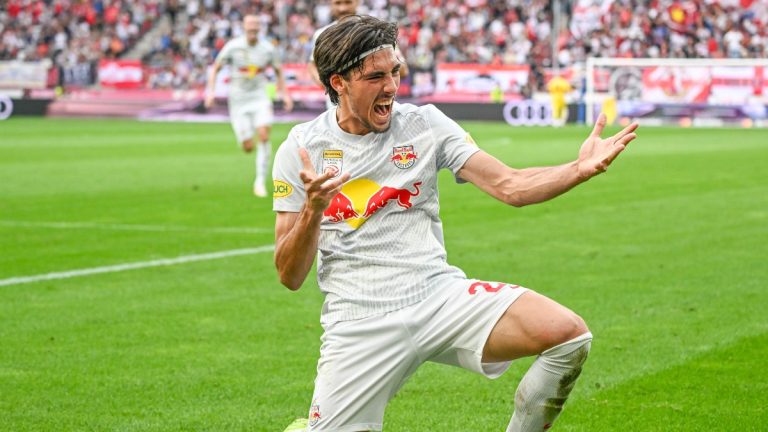Top 10 Biggest Football Stadiums in the World

Here you will find information about Biggest Football Stadiums around the world, but especially those in Europe in 2022. But what about stadiums that don’t necessarily have clubs playing in them, for example, or are in parts of the world that we don’t necessarily cover? Some of them are huge, like really, really big, so shouldn’t we talk about them too?
What’s the latest? We’ve done our look into the different countries in order to provide all you need to know about the largest, most impressive, and most stunning football stadiums around the World.
Football is the most popular sport around the world, especially across Europe, South America, Asia, and the new marketplace that is North America. Africa and Asia have also a large market share, with notable nations like Egypt, Algeria, Morocco, and South Africa, where football is also appealing to investors.
In the past few years, the competition and investments in football facilities have increased.
Top 10 Biggest Football Stadiums in the World
Here you will know about the Top 10 Biggest Football Stadiums in the World in 2022
10. Salt Lake Stadium – 85,000
Salt Lake Stadium, an all-seater multipurpose stadium with a capacity of approximately 85,000 people, is located in Bidhannagar. The stadium, named after Swami Vivekananda is home to several football clubs, including East Bengal, Mohammedan, and ATK Mohun Bagan. It has the fourth-largest stadium for sports in Asia, according to its seating capacity.
Salt Lake Stadium was the largest stadium for football in the world with 120,000 seats. It was the world’s largest football stadium before the opening of Rungrado May Day Stadium, in 1989. Salt Lake Stadium hosted the final match in the 2017 FIFA U-17 World Cup as well as other tournament matches. The stadium was closed to 66,687 spectators as part of security measures during the 2017 FIFA U-17 World Cup.
In 1997, the stadium saw 131,781 people watch the Fed Cup semi-final match between East Bengal and Mohun Baan.
As part of preparations for the U-17 World Cup 2017, the stadium was converted from artificial turf to natural turf. It was used in the Kolkata Derby match between East Bengal (Mohun Bagan) during the 2015 Calcutta First Division-16.
Salt Lake Stadium, an all-seater multipurpose stadium with a capacity of approximately 85,000 people, is India’s largest.
Salt Lake Stadium features electronic scoreboards and elevators. It also has lighting, VIP enclosures, lighting, VIP toilets, and a conference room.
Salt Lake Stadium, in addition to soccer and other sports activities, is an ideal location for Indian cultural activities, concerts, and tours.

Salt Lake Stadium Facts
- Opened: 1984
- Construction cost: N/A
- Capacity: 85,000
- Location: Salt Lake, Greater Kolkata, West Bengal, India
- Tenants: ATK Mohun Bagan, East Bengal, Mohammedan, India Men’s National Football Team
Where is Salt Lake Stadium?
9. Borg El-Arab Stadium – 86,000 seats
This is the second-largest stadium on the African continent, being second only to the FNB stadium in terms of total capacity. However, the 86,000 capacity of the Borg El-Arab stadium makes it the largest in Egypt by a comfortable margin. Unlike many other stadiums of its kind, it has been air-conditioned in many places so that the extreme weather conditions in this part of the world are combated with great efficiency. The designers have gone to great lengths to ensure that the stadium offers all kinds of facilities, including two sub-stadiums with a capacity of 2,000 spectators.
The Egypt national football team calls this stadium their home. It recently entered the history books after becoming the field from which Egypt qualified for the World Cup for the first time since 1990. In addition to a soccer field, the Borg El-Arab Stadium also has running tracks. and other sections for the Olympic Games. game activities.
You can also imagine the noise in this stadium when players like Mo Salah take to the field to represent the Egyptian national team. At full capacity, with over 85,000 fans supported, it must be electric there, although we imagine seats that are covered in shade are like gold given the heat in this part of the world.
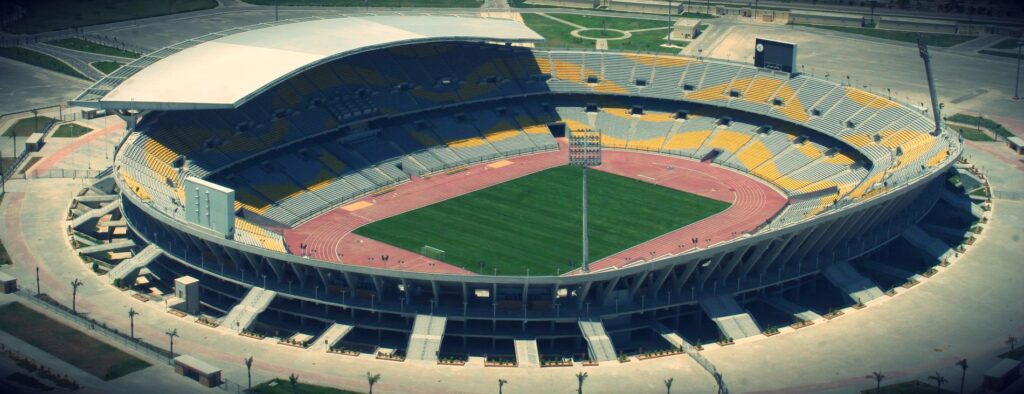
Borg El-Arab Stadium Facts
- Location: Borg El Arab, Egypt
- Opened: 2009
- Seating Capacity: 86,000 seats
- Construction Cost: €200 million in 2006
Borg El-Arab Stadium location?
8. Bukit Jalil National Stadium – 87,411 seats
The Malaysian national football team may not rank high in the FIFA rankings, but that doesn’t stop the national team from building one of the largest football stadiums in the world. The Bukit Jalil National Stadium, which was built at a cost of RM800 million, is a colossus that can hold more than 87,000 spectators. It is the largest stadium of its kind in Southeast Asia. So it is no surprise that it has hosted many other events besides the Malaysian national team matches.
The Bukit Jalil National Stadium has hosted the Commonwealth Games, the Southeast Asian Games, and more. This multi-sport venue comes with a roof and is largely built of reinforced concrete. Despite being relatively new, major renovations have already been carried out incorporating much-needed features such as new fixtures and LED lighting. More features such as retractable seats, retractable roofs, and lifestyle facilities are in the works and will also be included in the stadium as part of the upcoming renovation work.
As you can probably tell from the photo, this stadium is pretty high too, so with the retractable roof in full flow – this must make the stadium incredibly loud, vibrant, and awesome to play in. As stated before, Malaysia isn’t one of the most prestigious FIFA teams, but since this is one of the largest stadiums in the world, we’d imagine it is somewhat tricky for traveling teams!
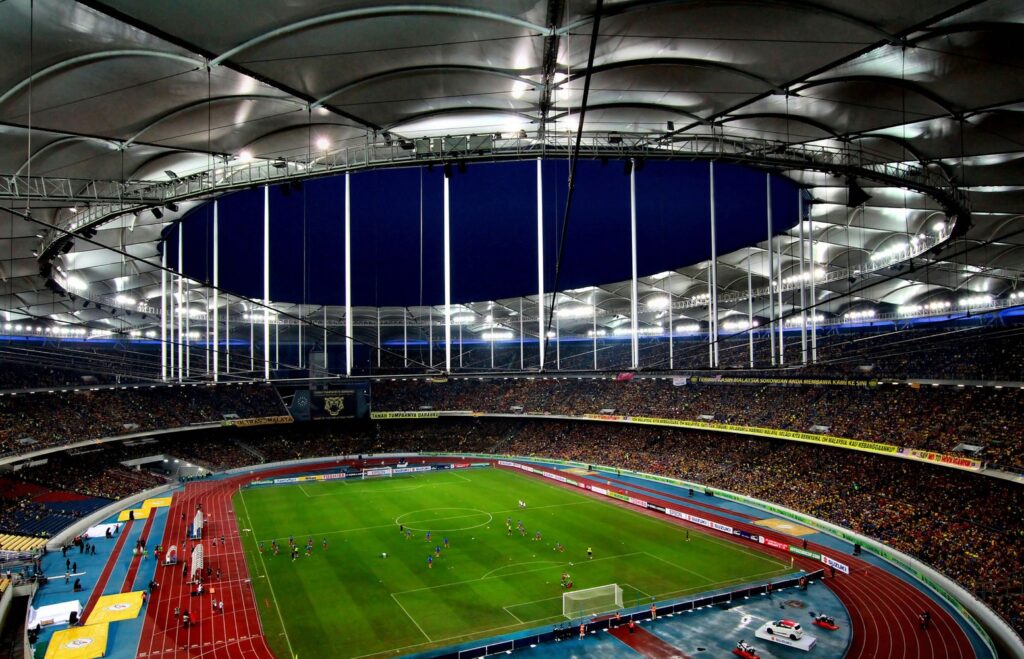
Bukit Jalil National Stadium facts
- Location: Kuala Lumpur, Malaysia
- Opened: 1998
- Seating Capacity: 87,411 seats
- Construction Cost: RM800 million
Bukit Jalil National Stadium location
7. Estadio Azteca – 87,525 seats
An iconic image in Mexico City would be the Estadio Azteca, which is the home of the Mexican national team, Cruz Azul and Club América. One of the main reasons why the stadium is steeped in history is the prestige of having hosted two World Cup finals: 1970 and 1986. This stadium also witnessed one of the iconic moments in world football when Diego Maradona invented the infamous ‘Hand of God’ goal against England at the 1986 World Cup.
The Estadio Azteca is also widely considered to have hosted the match between Italy and West Germany in 1970. This match is considered the “Game of the Century” and saw Italy prevail with a score of 4-3 after extra time. The Azteca Stadium can add more feathers to its cap considering that it is in line to host the games in the 2026 World Cup. In addition to the World Cup, the Azteca Stadium has also been the destination of the Summer Olympics and the World Cup. Women’s World Cup in the past.
The stadium has not shown its age even now, as frequent renovation works have constantly added new features such as LED panels and new entertainment spaces. In recent times, the addition of executive boxes has reduced capacity to 87,000.
If I were to contemplate visiting any stadium in Mexico, this would definitely be high on the list, for all the reasons mentioned above. It is a sacred place for soccer in Mexico, and since it has hosted so many prestigious games in the past, the Azteca Stadium is not only one of the largest, it is one of the most iconic stadiums on this list.
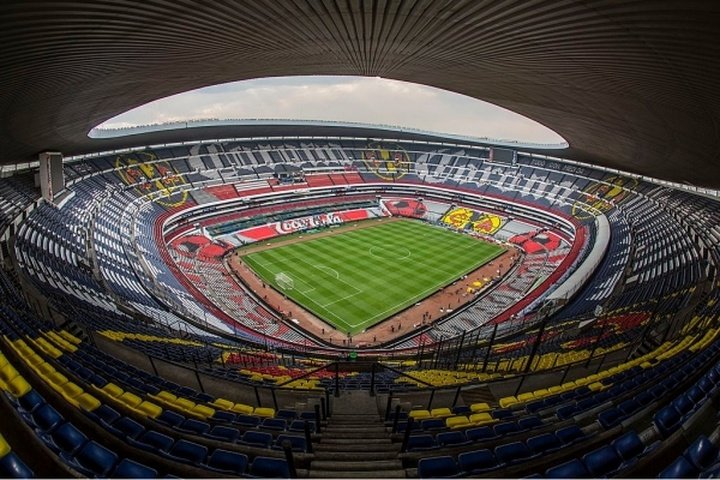
Estadio Azteca Facts
- Location: Mexico City, Mexico
- Opened: 1966
- Seating Capacity: 87,525 seats
- Construction Cost: MXN$260 million
Estadio Azteca location
6. Wembley Stadium – 90,000 seats
Wembley is an iconic destination for football fans in England. There was much skepticism when the English Football Association decided to tear down Wembley, considered the home of football, in favor of new ground. This new stadium opened in 2007 at a whopping cost of nearly £800 million. This would translate to a figure of £1.3 billion in current values.
Despite the extravagant cost, Wembley justified its image as a premier football destination. It is the home of the England national team and is one of the main destinations where international matches are played. However, rising construction costs forced the English FA to allow games in different competitions to take place. As a result, Wembley now hosts League Cup, FA Cup, and many other lower league competitions. It is also the destination where many event concerts are held. An iconic symbol of the ground is the huge semicircle that can be seen from a distance.
The stadium also manages to hold 90,000 indoors, making it the largest in its category. Wembley has already hosted major matches like the Champions League final in its modern history.
If you’re reading this from the UK, you probably know a lot of the facts already mentioned. Being one of the largest stadiums in the world, Wembley is simply a must-see place, and it just so happens that this stadium will host many important European Championship matches this year. It really is a sight to behold, and if you live in the UK, it’s well worth a trip.
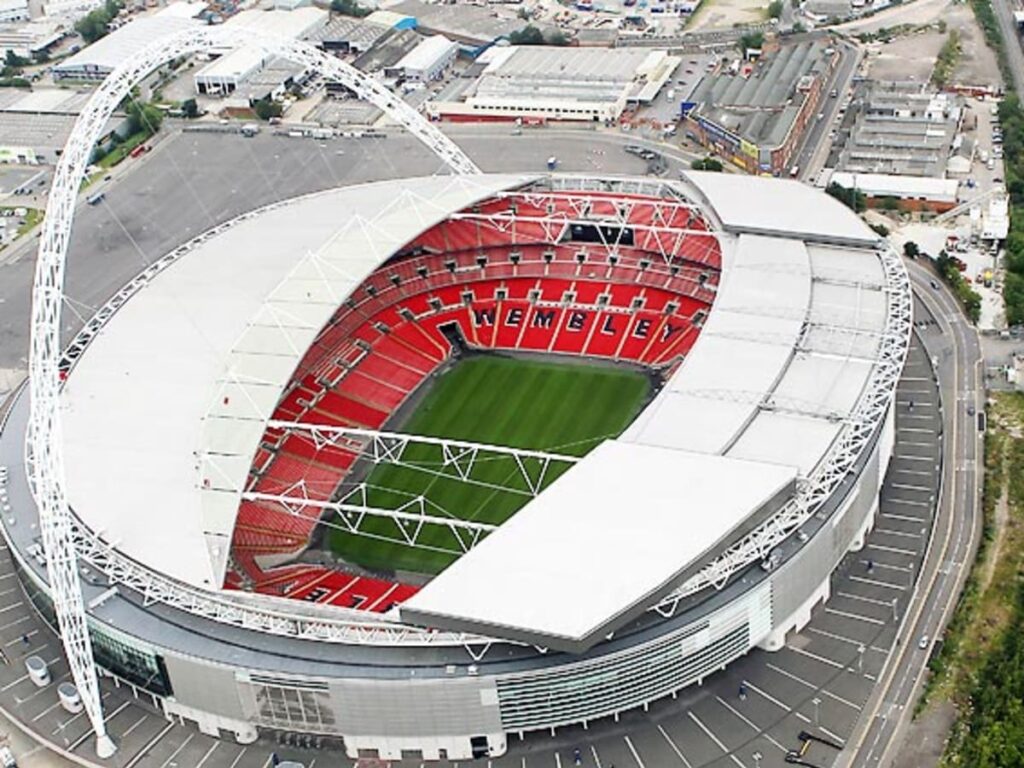
Wembley Stadium facts
- Location: London, England
- Opened: 2007
- Seating Capacity: 90,000 seats
- Construction Cost: £789 million in 2007
Wembley Stadium location
5. Rose Bowl – 95,542 seats
It’s no secret that Americans are fans of big stadiums and it’s easy to run into giants when it comes to college football and NFL competition. It could be easy to miss out on soccer stadiums on American soil, as the sport is only now gaining traction. However, there are some great soccer stadiums in the United States and the leader among them would be the Rose Bowl Stadium in California.
Despite its opening in the 1920s, the stadium began to become a landmark in the world of football when it hosted World Cup games in 1994. Since then, many clubs have used this ground as their host, being LA Galaxy the most prominent tenant in recent years. A common trait that the Rose Bowl shares with many other stadiums in the United States would be the lack of a roof and this actually contributed to an immense sight when Brazil and Italy played each other in the 1994 World Cup final.
Let’s be honest here: did you expect anything more from an American stadium? Our friends across the water love to do things in a big way, and it’s great that while the stadium is primarily used for football, the owners are more than willing to allow high-profile football games to be played. over there. Hopefully, in the future, we will see some more classics like afore mentioned Brazil vs Italy game.
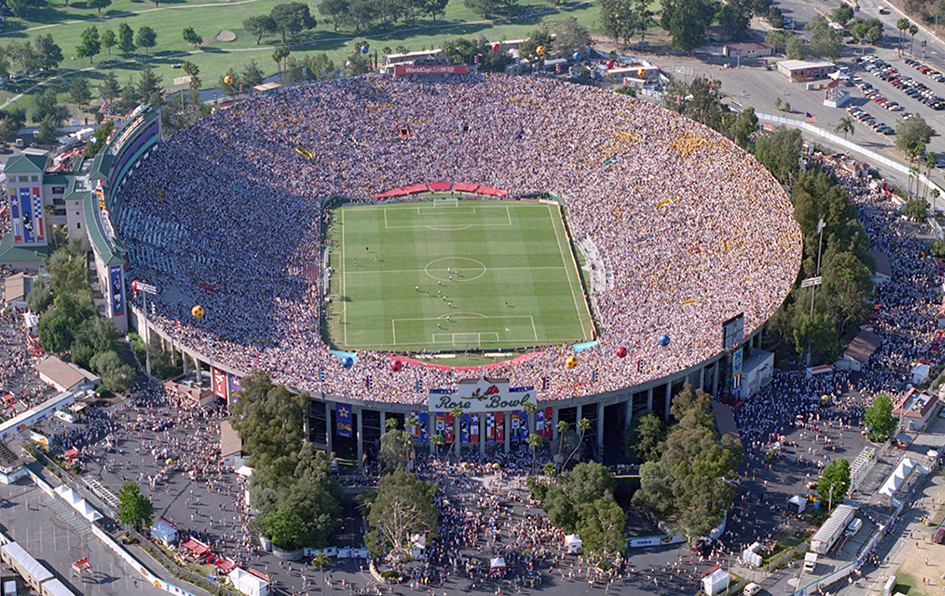
Rose Bowl facts
- Opened: 1922
- Seating Capacity: 95,542 seats
- Construction Cost: $4 million in 2019
- Location: Pasadena, United States
Rose Bowl stadium Location?
4. FNB Stadium – 94,736 seats
The FNB stadium is the largest of its kind in Africa and primarily hosts rugby and football matches. It can be quite an intimidating place given its size. The pitch has been used for various purposes in the past but is best known for hosting the 2010 World Cup final match between the Netherlands and Spain. The FNB Stadium is also the home ground for the South African national team, as well as hosting home games for the Kaizer Chiefs national team.
The stadium is also quite special as it managed to host Nelson Mandela’s last public appearance. Although the stadium has been around since 1987, the major renovation work in 2010 for the World Cup brought many new features such as executive suites, a new roof, lighting, and changing rooms. As well as hosting World Cup games, the FNB Stadium has also made a name for itself in terms of hosting African Cup of Nations games. The FNB Stadium is also the most modern stadium in this part of the world.
Coming to number 4, it’s already pretty clear that the FNB Stadium is one of the best out there. But, in our opinion, the size and aesthetics are not the stars of the show. When you look back at the matches played here for the 2010 World Cup, the atmosphere was just amazing, and it’s also where the now infamous vuvuzela echoed throughout the stadium.
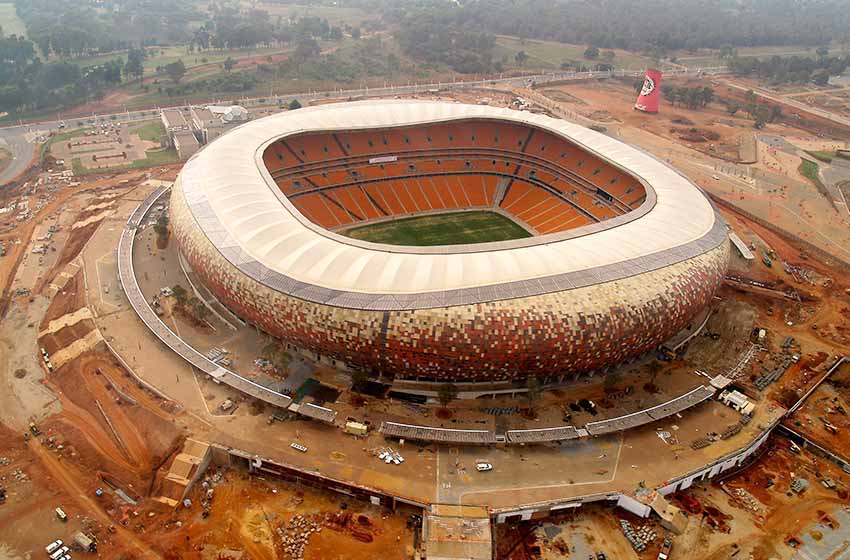
FNB Stadium facts
- Location: Johannesburg, South Africa
- Opened: 1989
- Seating Capacity: 94,736 seats
- Construction Cost: $440 million
FNB Stadium stadium Location?
3. Camp Nou – 99,354 seats
Camp Nou is home to FC Barcelona and has the distinction of being one of the largest stadiums in the world. It is easily the largest in Spain with a capacity that touches almost 100,000. This is an impressive feat for an all-seater stadium. Over the years, the course has managed to host every major tournament/game imaginable. It has been able to host Champions League finals, World Cup games, Summer Olympics, European Nations Cup, and more.
The latest extensions and reforms have ended up costing more than 600 million euros, which makes it one of the most expensive reforms. Even after spending huge sums of money, Camp Nou is still one of the best European stadiums without a roof in most sections. Despite having a capacity of almost 100,000, the Barcelona board has not stopped coming up with expansion projects and the latest will add even more seats when it is completed in 2024.
The forthcoming expansion will bring the seating capacity to more than 10,500 and this will make Camp Nou the second-largest football stadium in the world. It will comfortably beat Melbourne Cricket Ground.
We would continue with impressive statistics and figures around Camp Nou, but we feel that we have already done it justice. Instead, we would like to close by saying how incredible it is that the stadium has remained true to its roots, including location and style, despite proposed expansion efforts. In essence, this tradition is also what makes Camp Nou such a special place for football.

Camp Nou Facts
- Opened: 1957
- Construction cost: €1.73 billion
- Capacity: 99,354
- Barcelona, Catalonia, Spain
- Tenants: FC Barcelona
Camp Nou location
2. Melbourne Cricket Ground – 100,024 seats
The Melbourne Cricket Ground is one of the world’s iconic sporting destinations. This is a multi-purpose venue that manages to host cricket and football events. Over the years, the ground has gained a lot of prominence as a result of hosting all kinds of major events. The MCG, as it is also known, has been a destination for Australian rules football matches, Olympic events, and World Cup qualifiers, among others.
Since the MCG has been around for a long time, constant renovation works have been carried out to keep it in step with modern demands. The last major renovation took place in 2006 and cost a sum of money that many new stadiums would refuse. It is remarkable that the pitch has been able to survive many catastrophes such as the World War and still retains its position as one of the largest football stadiums in the world.
It’s quite cool that you wouldn’t really expect one of the largest stadiums in the world to be located Down Under, especially not for football. And on that note, while it’s already been used for multiple sports, we expect that this stadium will really receive the recognition it deserves once it plays host to the Women’s World Cup. We can’t think of a better symbol/stage to show support for equality in football than this one!
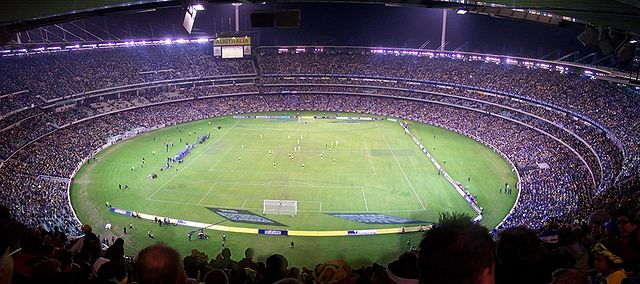
Melbourne Cricket Ground Facts
- Location: East Melbourne, Australia
- Opened: 1853
- Seating Capacity: 100,024 seats
- Construction Cost: $150 million in 1992 and $460 million in 2006
Melbourne Cricket Ground Location
1. Rungrado 1st of May Stadium
This is undoubtedly the largest football stadium of its kind. Opened the way back in 1989, the stadium is built on an area of almost 21 hectares. Since North Korean football is not really the strongest in the world, this football stadium finds its use as a multi-purpose venue. This is made possible by a scalloped ceiling that has a lot of intricate work.
Although the stadium acts as the home of the North Korean national team, it also hosts a number of non-soccer events throughout the year. Like the country, very little information, such as construction costs, is known about the stadium.
But while we don’t know much about the cost and other details of the stadium, we don’t need to look too far beyond the capacity to imagine what game day might look like at this venue. As the largest football stadium in the world, with almost 115,000 spectators, it must be absolutely amazing when full, and the design of the stadium is just as amazing.

Rungrado 1st of May Stadium Facts
- Location: Pyongyang, North Korea
- Opened: 1989
- Seating Capacity: 114,000 seats
Rungrado 1st of May Stadium location
Fun facts about the biggest football stadiums in the World?
More than £5 billion in construction costs
If you adjust the prices given for inflation, our list of 10 largest stadiums could have a cost of more than PS5bn. It’s not an error, it truly could be in the millions! Although the cost of construction alone is astounding, think of the work hours involved in building such stadiums!
Capacities used to be much larger
This is something that our younger readers aren’t familiar with. It’s true that these stadiums could hold much more people than they do today because security measures were put in place to prevent standing for a long time following numerous disasters in the UK. In reality, many stadiums had a capacity greater than 100,000 before the new rules were implemented.
Wembley is best if you need the bathroom
Of all the interesting information we could find regarding these stadiums, this one is quite intriguing. If you’ve ever been to a football match before you’re likely familiar with the halftime “bathroom fever” and many players have experienced issues with this problem in the past. But at Wembley this stadium, boasts the highest number of toilets of any building in the world, making it ideal to stay clear of the half-time rush.
Rungrado Stadium could actually have a capacity greater than 150,000
The funniest part about this story is that even though we put the capacity as 114,000, nobody really knows exactly what the actual numbers are! North Korea is famous for its secrets and if you’ve never attended a game in the country it’s hard to know the inside of the stadium or what the seating arrangements are similar to.
References
Source: Football Arroyo

